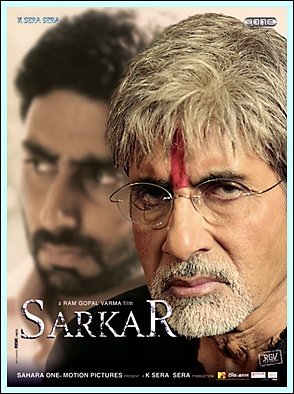 Cheeni Kum, which is Hindi and translates to Less Sugar, is the story of a 64 year chef and owner of the best Indian restaurant in London, and a 34 year software engineer from Delhi, India, off for a holiday in London. That sets the film up as a romance. But that is only a part of the story. What makes this film so enjoyable is that the two leads sort of work through their courtship via sarcasm. That may make the story line a wee bit cloudy, so I’ll help you through it with some more detail.
Cheeni Kum, which is Hindi and translates to Less Sugar, is the story of a 64 year chef and owner of the best Indian restaurant in London, and a 34 year software engineer from Delhi, India, off for a holiday in London. That sets the film up as a romance. But that is only a part of the story. What makes this film so enjoyable is that the two leads sort of work through their courtship via sarcasm. That may make the story line a wee bit cloudy, so I’ll help you through it with some more detail.
Amitabh Bachchan (68 in real life but playing 64 in this film) is an older man, Buddhadev Gupta, who is unmarried, and has never been married. He is full of himself, as in egotistical. He runs his restaurant which is actually his whole life (he’s not missed a day in 22 years) with a certain amount of sternness as well as heavy handedness. He tolerates no mistakes, and requires all the staff to devote every ounce of their beings towards making each and every dish that the restaurant serves – perfect. He is sort of a culinary Captain Bligh.
One night a waiter returns to the kitchen carrying plate of the Zafrani Pulao (sort of a mutton biryani). He says that the customer sent it back claiming that it tasted of sugar, and sugar is not used in a meat and rice dish of this type. That was the equivalent of waving the red flag at the bull as Gupta could not believe or even accept that one of his chefs made such a mistake. As you might expect, he belittles and challenges the customer before basically calling her a tourist and worse. She calmly gets up and leaves.

This is none other than the beautiful Tabu, here playing the role of Nina Verma.
A few nights later, the same waiter comes into the kitchen carrying another plate of the Zafrani Pulao. Gupta is all over him, and before this waiter can say a thing, Gupta has gotten out a spoon and tasted the food. He then claims it is perfect. Only at that moment does the waiter tell him that this dish was not being sent back by a customer. Instead it was being sent in by the customer who prepared and cooked the dish herself.
Yes it was Nina Verma. And so the relationship begins. Gupta is a confirmed lifetime bachelor, and is not so sure of himself when it comes to women. The two of them toss each other lines and each of the responses is more sarcastic then what came before. Pitch perfect lines delivered with flawless timing. It doesn’t get any better than that.













